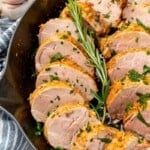Deliciously seasoned and seared to perfection, Cast Iron Pork Tenderloin boasts a mouthwatering blend of flavors and an irresistibly tender texture. Have dinner on the table in just 30 minutes!
This post may contain affiliate links. If you click on a link and make a purchase, I may receive a small commission at no extra cost to you. For more information, please read my disclaimer.
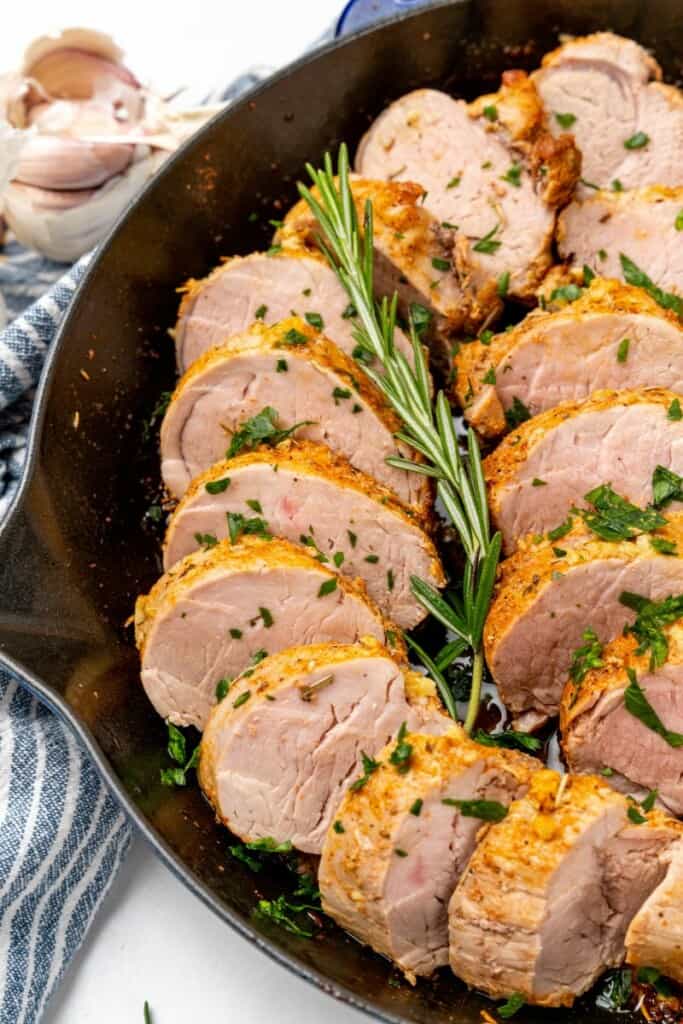
Cast iron pork tenderloin is a dish that effortlessly combines simplicity, speed, and sensational flavor. With just 15 minutes of prep, you can create a sensational dinner that the whole family will love.
The secret lies in the magic of the cast iron pan, which ensures a perfectly seared and roasted exterior and a juicy, tender interior.
Even heat distribution allows the meat to get a gorgeous browned and caramelized crust, and you can transfer the marinated pork tenderloin on the stove straight into the oven to finish. It’s a convenient and foolproof technique that delivers incredible results every time!
Whether you’re a seasoned chef or a beginner in the kitchen, this easy pork tenderloin cast iron recipe is guarantees delicious results, making it a perfect option for a quick and satisfying meal.
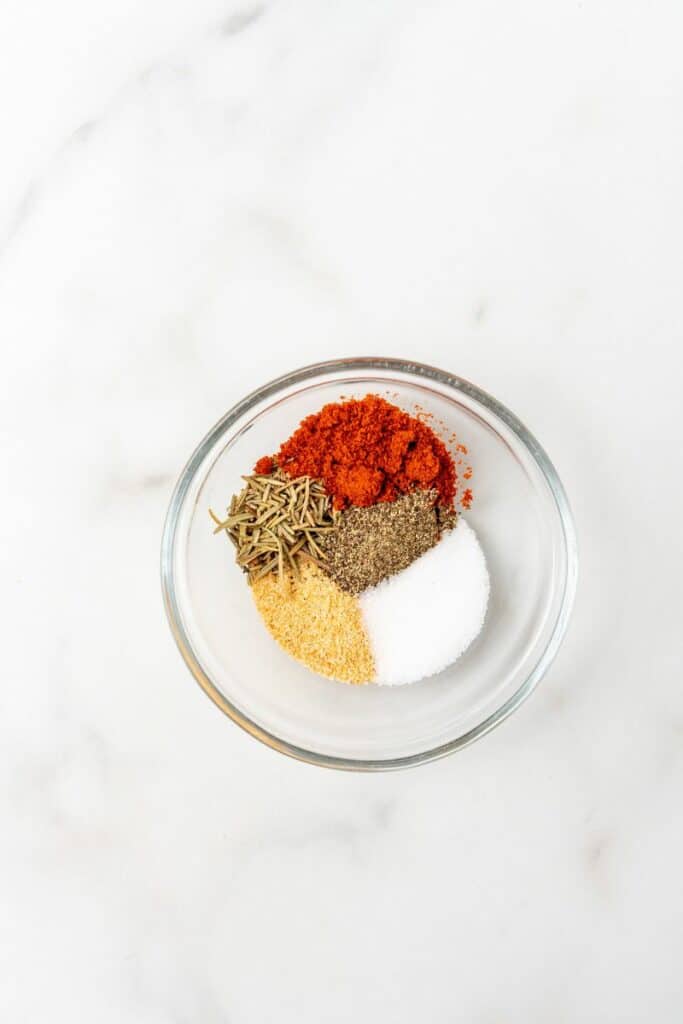
How to Make Pork Tenderloin in a Cast Iron Skillet
A full printable version of this recipe with ingredient measurements is available at the bottom of this post.
STEP ONE: Preheat the oven to 425 degrees F and place a large cast iron skillet over medium-high heat.
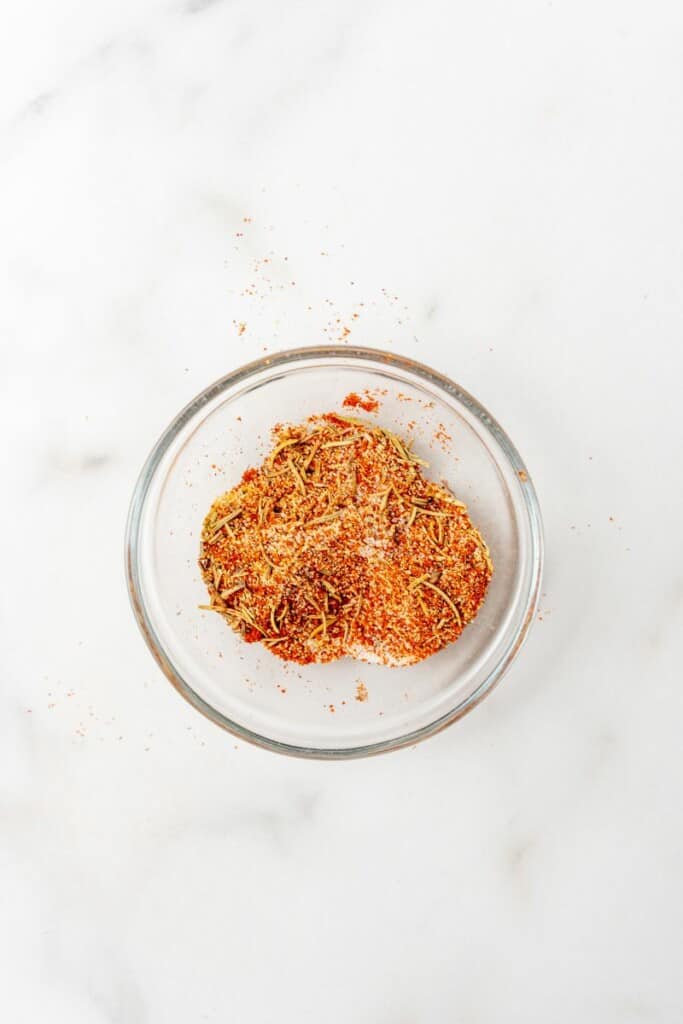
STEP TWO: In a small bowl, combine salt, rosemary, paprika, and garlic powder. Mix them thoroughly, then rub the mixture onto all sides of the pork tenderloins, ensuring they are evenly coated.
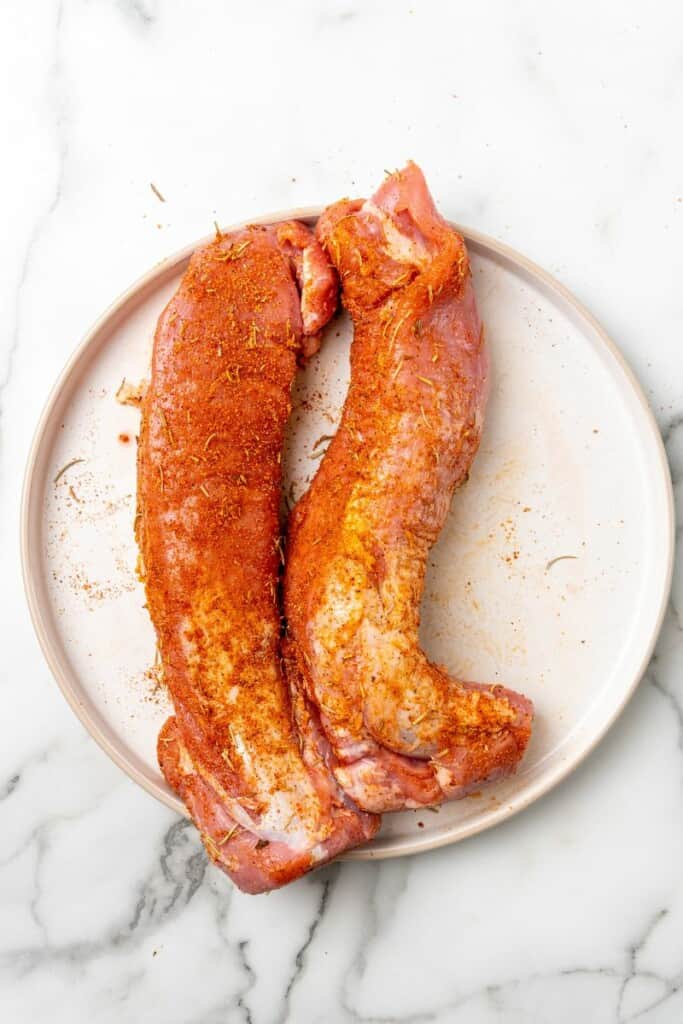
STEP THREE: Once the skillet is hot, add olive oil and swirl it around to coat the entire pan. Carefully place the seasoned pork tenderloin on the stove and sear them on all sides until they develop a beautiful brown crust. Add some butter and garlic to the skillet, then spoon the mixture over the meat as you pan fry pork tenderloin.
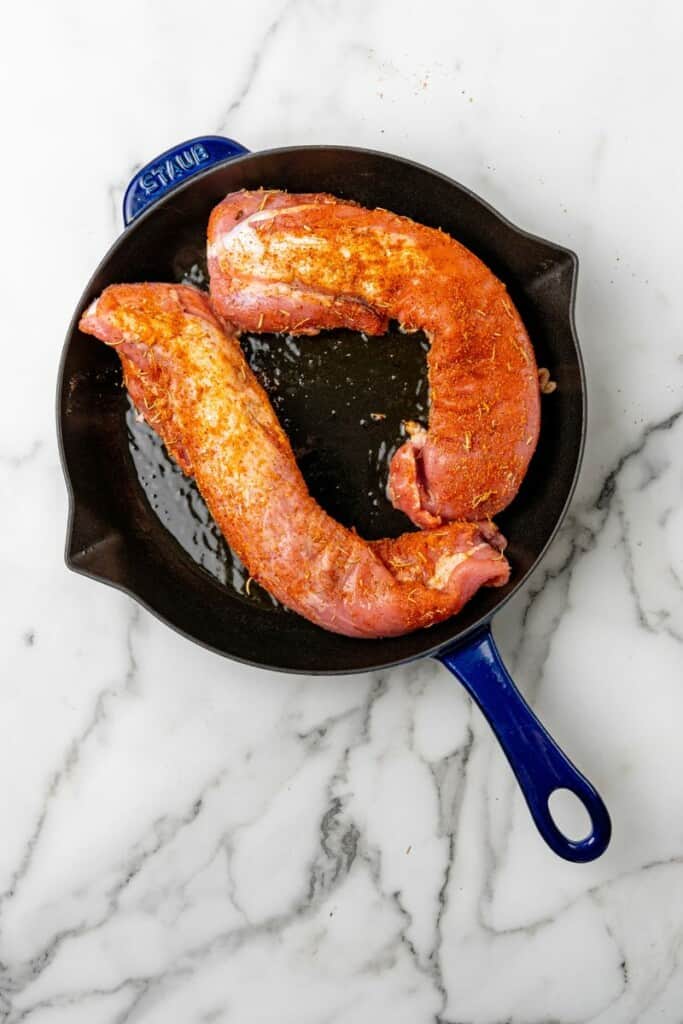
STEP FOUR: Transfer the skillet to the preheated oven. Bake cast iron pork tenderloin for about 20 minutes, or until the internal temperature reaches 145 degrees F.
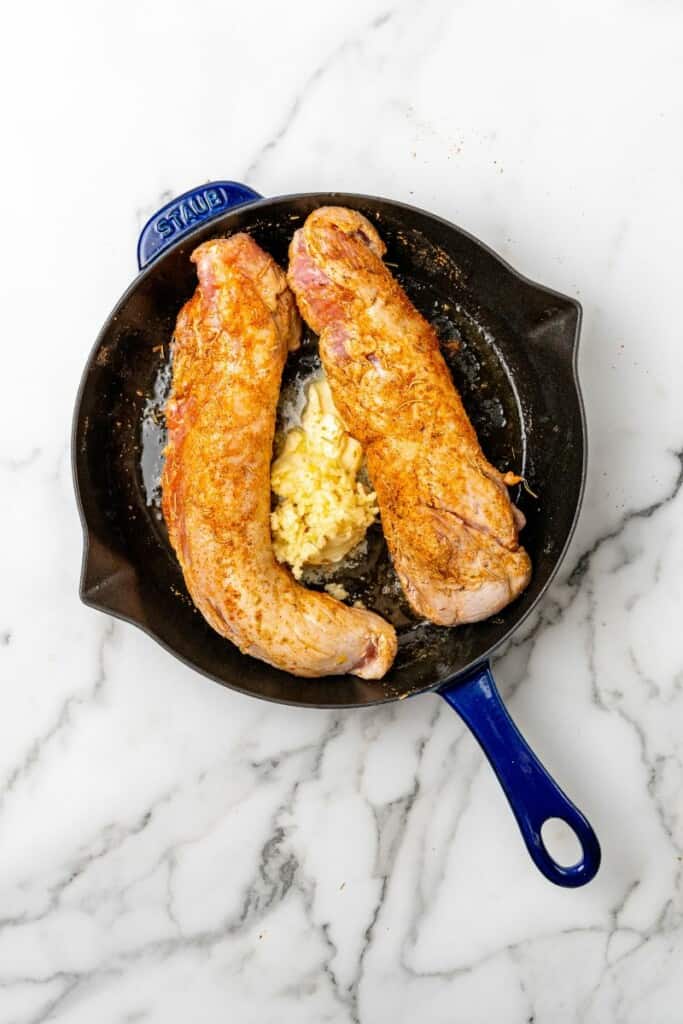
STEP FIVE: Once the pan seared pork tenderloin is cooked, remove them from the oven and let them rest for 5 minutes. This allows the juices to redistribute and ensures a moist and flavorful result.
STEP SIX: Sprinkle cast iron pork tenderloin with freshly chopped parsley before serving.
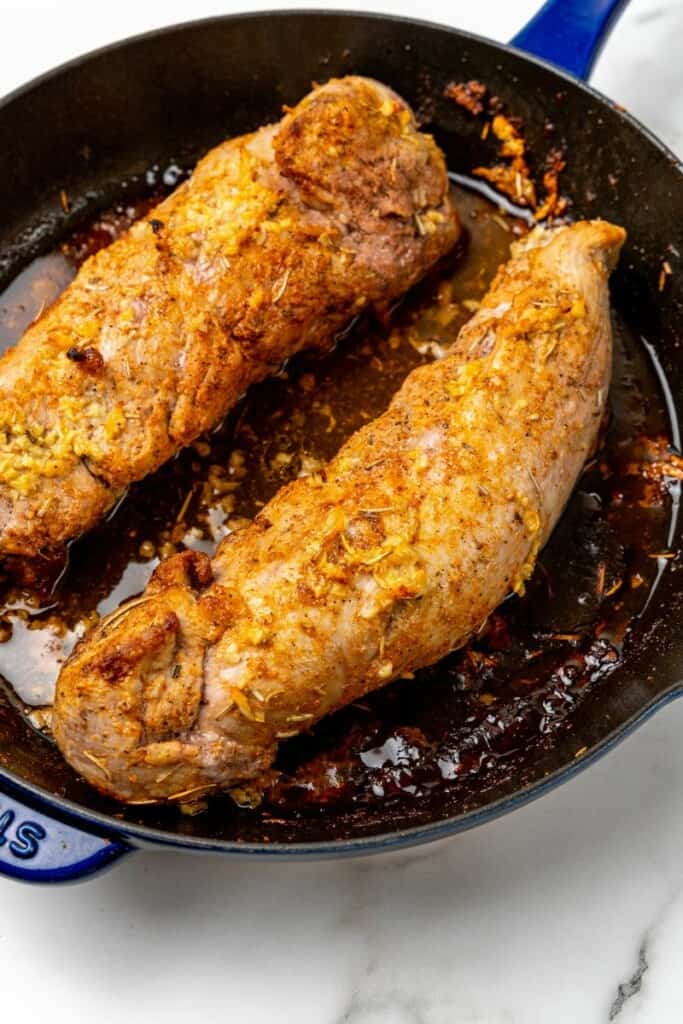
What to Serve With Seared Pork Tenderloin
- Instant Pot Garlic Mashed Potatoes
- Green Bean Casserole with Cream Cheese
- Air Fryer Broccoli
- Instant Pot Carrots
- Cajun Corn on the Cob
- Air Fryer Asparagus
Variations for Pork Tenderloin Cast Iron Recipe
- Create a tangy glaze. Simmer balsamic vinegar with a touch of honey or brown sugar, then brush it over the pork during the last few minutes of cooking.
- Boost the flavor. Brush the cast iron pork tenderloin with a mixture of Dijon mustard, honey, and a touch of apple cider vinegar before searing in skillet and oven baking it.
- Try some Cajun flair. For a bold and spicy twist, use a blend of paprika, cayenne pepper, garlic powder, onion powder, and dried thyme instead. Coat the surface as directed before placing pork tenderloin in a cast iron skillet.
- Add an Asian twist. Brush with a homemade teriyaki sauce before you pan sear pork tenderloin. It will turn into a flavorful and sticky glaze in the oven!

More Main Entree Recipes
- Cast Iron Chicken Breast
- Steak Fajitas
- Stovetop Mac and Cheese
- Chicken and Broccoli Lasagna
- Air Fryer Lemon Pepper Wings
- Air Fryer Shrimp
What is the Difference Between Pork Tenderloin and Pork Loin?
Pork loin is a larger cut often covered with a thick fat cap that does really well with slow cooking methods. Bone-in cuts are often cooked as a rack, while boneless cuts are used as roasts or sliced into chops.
Instead, pork tenderloin is a smaller, leaner cut of meat that comes from the muscle beneath the backbone. It does best with quick cooking methods, like our pork tenderloin cast iron recipe! Tenderloin also has a more delicate flavor, making it a great candidate for rubs and marinades.
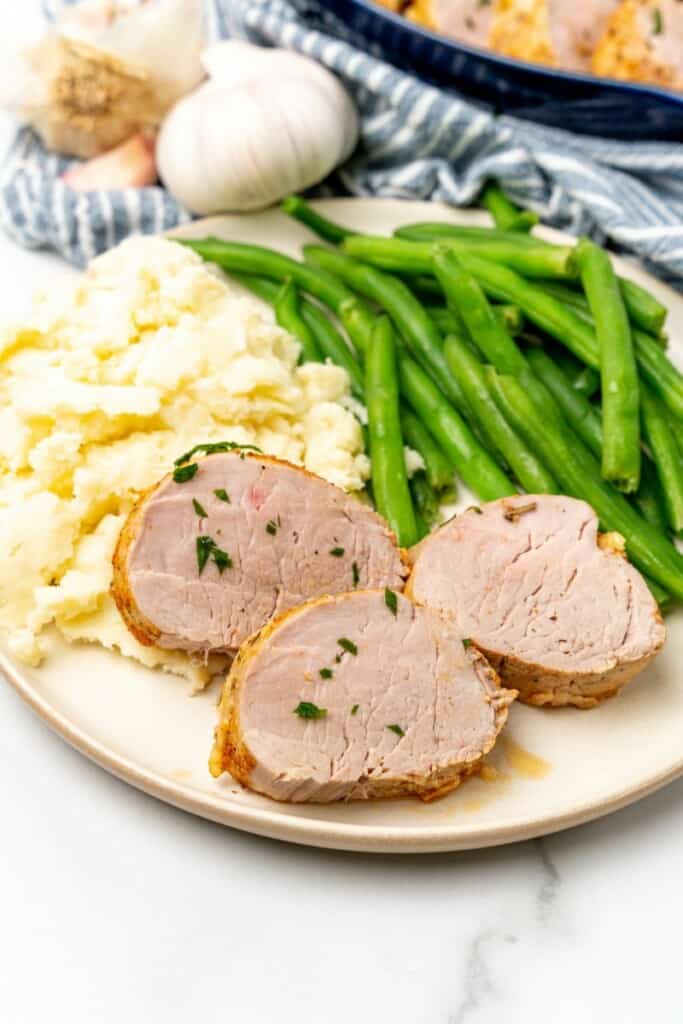
Should I Sear Pork Tenderloin Before Baking It?
Yes, and that’s exactly what we do in this pork tenderloin cast iron recipe! Not only does searing meat create a delicious crust on the outside, but it helps to lock in all of the juices for perfectly tender and moist results.
Cast iron is the best option for pan seared pork tenderloin — it heats hotter and more evenly than other types of pan and can straight from the stovetop to the oven!
Can Pork Tenderloin be 145 and Still Pink?
The safe minimum internal temperature for seared pork tenderloin is 145 degrees F, regardless of the color. Use a digital meat thermometer inserted into the very center for the most accurate results.
If the color bothers you, pan fry pork tenderloin a little bit longer before it goes in the oven. It can go up to 155 degrees F before it starts to dry out.
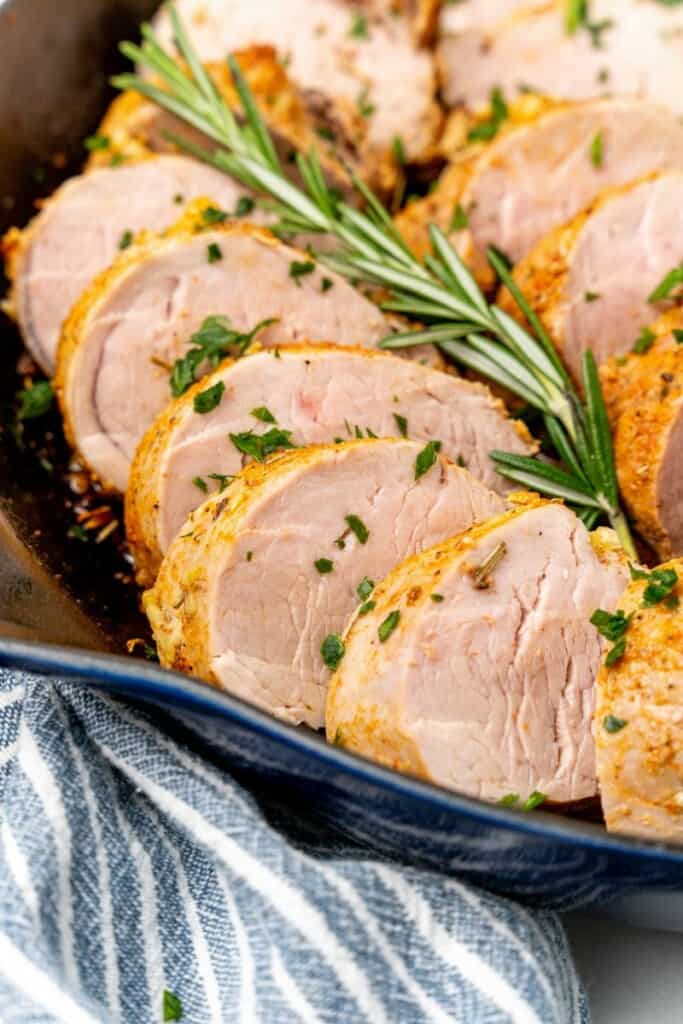
More Pork Recipes to Try
- Ninja Foodi Pork Tenderloin
- Air Fryer Pork Chops with Flour
- Ninja Foodi Pulled Pork
- Pork Tenderloin in the Oven
- Crock Pot Ranch Pork Chops
- Air Fryer Pork Belly
- Air Fryer Pork Tenderloin
- Breaded Air Fryer Bone-in Pork Chops
- Air Fryer Pork Loin
Love air frying? Join my newsletter! You can also follow me on Facebook, Instagram, or join my free Facebook Air Frying Community.
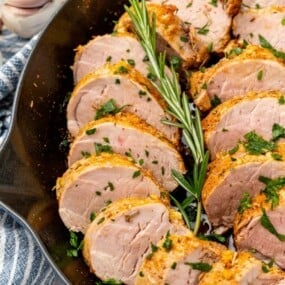
Cast Iron Pork Tenderloin
Ingredients
- 1 teaspoon salt
- 1 teaspoon dried rosemary
- 1 teaspoon paprika
- 1 teaspoon garlic powder
- 2 pork tenderloins
- 1 tablespoon olive oil
- 3 tablespoons butter
- 2 cloves garlic minced
- 2 tablespoons minced parsley optional
Instructions
- Preheat oven to 425 F.
- In a small bowl, mix together the salt, rosemary, paprika, garlic powder; rub onto a ll sides of the pork tenderloins.
- Heat a large cast iron skillet over medium high heat, then add the olive oil and swirl to coat pan.
- Sear the pork tenderloins on all sides, then add the butter and garlic and allow to melt, spooning some over the tops of the tenderloins.
- Bake in preheated oven about 20 minutes, or until cooked through.
- Allow to rest 5 minutes before sprinkling with parsley and serving.
Nutrition
This nutrition information is based on the exact products I used in this recipe. Brands and sizes of products could alter exact nutrition and should always be calculated independently.
